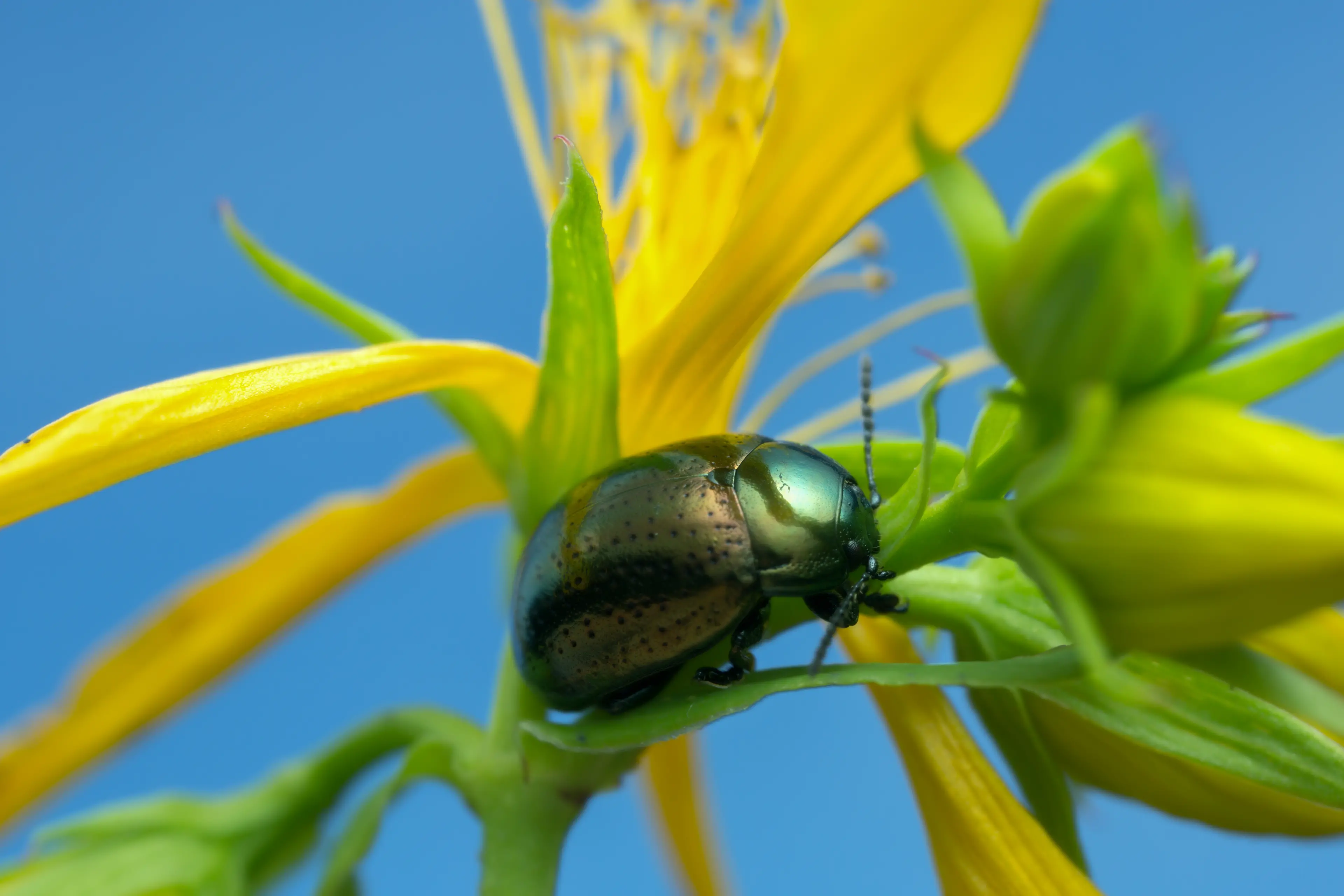PHOTO
After several years of wet springs and patchy beetle activity, local landholder Gary Johnson has reported a strong return of Chrysolina hyperici—the St John’s wort beetle—across his property, Tulangi.
“When I took over the management of Tulangi in 1999 there was only a small amount of St John’s wort on the property,” Mr Johnson said.
“How I wish I had eradicated it there and then.
It has continued to spread.
The biological control beetle was introduced in the 1980s and is effective in controlling the plant by attacking the spring growth and defoliating the plant however over the past few years, with wet springs, it hasn’t been as active.
This year I am seeing large numbers of shiny, metallic coloured beetles over a wide area.”
St John’s wort (Hypericum perforatum) remains one of the most troublesome weeds in the Central and Southern Tablelands, thriving in hill and high-country pastures where rainfall exceeds 600 millimetres a year.
The weed competes with productive pasture species, reduces land value, and poses risks to livestock, particularly through a chemical compound that causes photosensitivity when ingested.
The resurgence of Chrysolina hyperici is a welcome sign for landholders in the Hilltops region.
The beetles and their larvae feed on the plant’s foliage, often leading to complete defoliation in heavily infested areas.
Their impact is most noticeable when combined with long-term grazing and pasture management strategies.
Mr Johnson’s observations add to broader reports of renewed beetle activity across the region this spring, suggesting that the biocontrol agent is re-establishing after several damp seasons limited its effectiveness.
For many farmers, the sight of the small, metallic beetles glinting across paddocks is a hopeful reminder that persistence and biological control can pay off in the fight against one of the district’s most persistent weeds.





